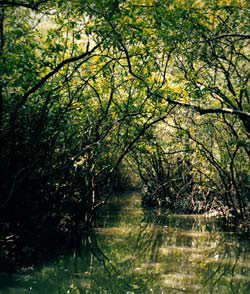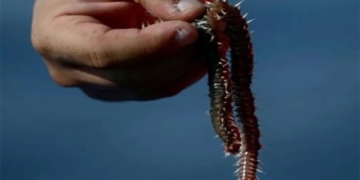Many species of wildlife and aquatic life in the mangrove forest of Nhơn Trạch District (Đồng Nai) are facing serious threats. The primary causes are environmental pollution of water sources and destructive fishing practices.
 |
A corner of the mangrove forest (Photo: VNN) |
Nhơn Trạch District currently has about 10,000 hectares of mangrove forest. In the past, this area was home to a diverse range of flora and fauna, including wild boars, monkeys, civets, porcupines, and various bird species.
Notably, because the forest is located downstream of the Đồng Nai River, close to the sea, and is affected by tidal fluctuations, it hosts hundreds of species of shrimp and fish from freshwater, brackish, and saltwater.
However, many animal species in this area have now disappeared. The populations of shrimp and fish are declining due to untreated industrial wastewater and encroachment from surrounding areas.
Whenever strong tidal surges push large volumes of water from the river mouth and coastline, polluted industrial wastewater flows deep into the forest, severely impacting various flora and fauna.
Along both banks of the channels in this mangrove forest, many types of trees are being illegally exploited for timber and firewood, especially the nipa palms, which are considered ideal habitats for birds, mammals, shrimp, and fish. Locals also strip the leaves for thatching roofs.
The use of electric fishing and fishing with electric rakes is on the rise, while local authorities lack effective measures to prevent these practices. For example, every year, local government seizes dozens of cases of illegal forest resource exploitation and hands them over to district authorities for processing, but the fines are not severe enough to deter offenders.
Moreover, many offenders are overlooked due to personal connections and continue to reoffend.
According to experts, the characteristic of mangrove forests is their excellent ability to self-cleanse the environment. However, pollution, especially untreated industrial wastewater exceeding permissible limits, can destroy this function of the forest.




















































